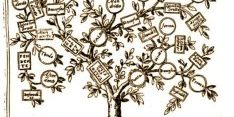Decision trees are sometimes derided by practitioners of historical fencing; after all the chaos of a fencing match rarely allows the luxury of time for complex decision making, and even a relatively simple decision tree can have multiple recursive branches and layers. As a result even a relatively sedate exchange gives precious little opportunity the complexities of long term diagram driven decision making. In this article we’ll take a deeper look at decision making processes, and how decision trees can be used to great effect to improve our fencing.
[…]From an academic perspective there are a variety of formalisms for diagramming tactical and strategic decision making, from simple flowcharts through to the Tactical Decision Framework (TDF) formalism put forward by Thangarajah & Everstz [1] which captures the Goals of an individual Actor in a scenario, and maps them to plans, actions, and other interactions through a formal set of symbols and diagram structures. The method you use isn’t important; it’s the process of stepping back from the trees and seeing what they represent that counts.
However you write them down, there are a number of criticisms leveled at decision trees.
Continue reading on scholarvictoria.com






